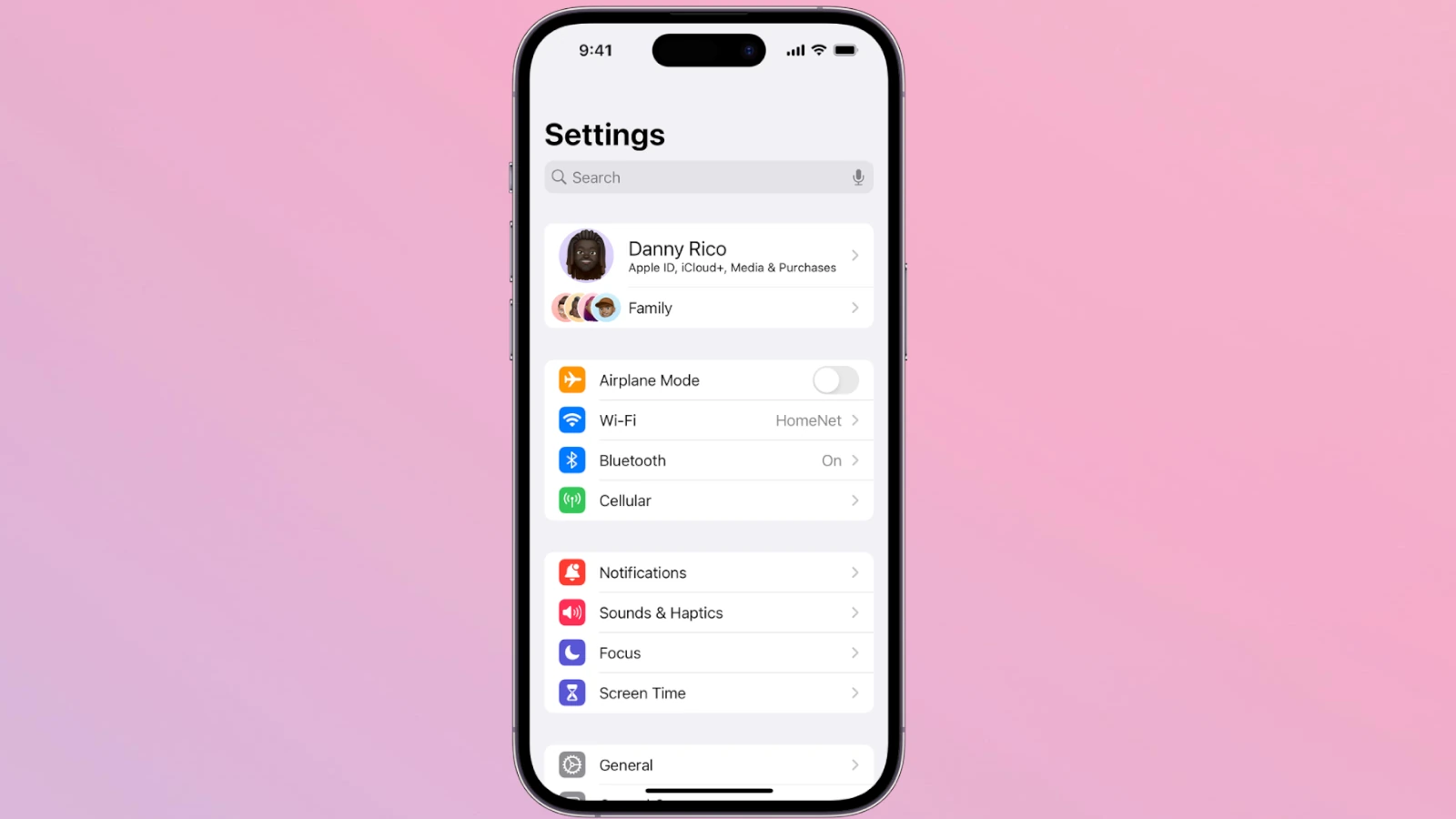Is your iPhone running slower than usual? Clearing the cache can help speed it up and free up storage space. Removing cached data from apps and browsers on your iPhone can improve performance and protect your privacy. This simple process takes just a few minutes but can make a big difference.
Many iPhone users don’t realize how much temporary data builds up over time. Apps and websites store information to load faster, but this cache can eventually slow things down. Clearing it out removes old files you no longer need.
Boost Your iPhone’s Performance: A Guide to Clearing Your Cache
Is your iPhone feeling a bit sluggish? Clearing your cache can help free up storage space and improve performance. The cache stores temporary files and data that apps and websites use to load faster. Over time, this data can accumulate and take up valuable space on your device.
Clearing Safari’s Cache
Safari, Apple’s web browser, stores website data to speed up browsing. Here’s how to clear it:
- Open Settings: Tap the “Settings” app on your home screen.
- Scroll to Safari: Find and tap on “Safari” in the list of apps.
- Clear History and Website Data: Tap on “Clear History and Website Data.”
- Choose Your Timeframe: You can choose to clear the history and data for all time or for specific timeframes (like the last hour or today).
- Confirm: Tap “Clear History and Data” again to confirm.
Clearing App Caches
Many apps have their own built-in settings for clearing cached data. The exact steps may vary depending on the app, but here’s a general approach:
- Open the App: Launch the app you want to clear the cache for.
- Find Settings: Look for a settings or options menu within the app. This is often represented by a gear icon.
- Look for Storage or Cache Options: Look for terms like “Storage,” “Cache,” “Clear Data,” or “Clear Cache.”
- Clear the Cache: Follow the app’s instructions to clear the cached data.
Offloading Unused Apps
Offloading apps is a great way to free up storage space without losing your data. When you offload an app, the app itself is deleted, but its documents and data are preserved. If you reinstall the app later, your data will be restored.
- Go to iPhone Storage: In the Settings app, go to General > iPhone Storage.
- Choose an App: Select the app you want to offload.
- Offload App: Tap “Offload App” and confirm.
What About Third-Party Cache Cleaners?
There are third-party apps that claim to clean your iPhone’s cache. However, these apps often have limited effectiveness and may even pose privacy risks. It’s generally recommended to stick with the built-in methods for clearing your cache.
Benefits of Clearing Your Cache
- Free Up Storage: Clearing your cache can free up valuable storage space on your iPhone.
- Improved Performance: Removing unnecessary files can help your iPhone run faster and smoother.
- Privacy Protection: Clearing your cache can help protect your privacy by removing browsing history and other temporary data.
By regularly clearing your cache and offloading unused apps, you can help keep your iPhone running smoothly and efficiently.
Key Takeaways
- Clearing cache frees up storage and boosts iPhone speed
- Safari and app caches can be cleared in Settings
- Regular cache clearing helps maintain iPhone performance
Understanding iPhone Cache
iPhone cache stores temporary data to speed up app loading and browsing. This data can build up over time and affect device performance.
Types of Cache Data
Safari cache saves web pages and images for faster reloading. App cache keeps temporary files for quicker startup. System cache stores temporary data for iOS functions. Cookies save login info and site preferences.
These different types of cache help your iPhone run smoothly. But they can take up space over time.
Impact of Cache on iPhone Performance
Cache can both help and hurt iPhone performance. Fresh cache speeds up apps and web browsing. But old cache slows things down.
Too much cached data uses up storage space. This can make your iPhone run slower. It may also cause apps to crash or freeze.
Clearing cache frees up space and can fix some performance issues. But it’s not always needed if your iPhone runs well.
Benefits of Clearing Cache Regularly
Clearing cache can boost iPhone speed and fix some problems. It frees up storage space for new apps and files. Removing old cache data can also fix glitchy apps.
Clearing cache improves privacy by deleting stored info. It removes outdated content so you see fresh web pages. Regular cache clearing keeps your iPhone running smoothly.
But don’t clear cache too often. Some cached data is helpful for daily use. Clear cache only when needed to fix issues or free up space.
Step-by-Step Guide to Clearing Cache
Clearing cache on your iPhone can improve performance and free up storage space. This process involves removing temporary data from Safari and other apps.
Clearing Safari Cache and History
Open the Settings app on your iPhone. Scroll down and tap Safari. Look for the “Clear History and Website Data” option near the bottom of the screen. Tap it, then confirm by tapping “Clear History and Data” in the pop-up.
This action will erase your browsing history, cookies, and other cached data. It may log you out of some websites. Your bookmarks and saved passwords will not be affected.
For a less drastic option, you can delete website data for specific sites. Go to Settings > Safari > Advanced > Website Data. Swipe left on a site to delete its data.
Removing Cache from Third-Party Apps
Many apps store cached data that can be cleared to free up space. Go to Settings > General > iPhone Storage. You’ll see a list of apps sorted by how much space they use.
Tap on an app to see its storage details. Some apps have a “Delete App” option that removes the app and all its data. Others may have an “Offload App” choice that keeps documents and data but deletes the app itself.
For browsers like Chrome or Firefox, open the app and look for clear cache options in their settings. This process varies by app but is often found in privacy or data management sections.
Offloading Unused Apps to Free Up Storage
Offloading lets you remove apps while keeping their documents and data. When you reinstall, your data returns. To offload, go to Settings > General > iPhone Storage.
Tap on an app and select “Offload App”. The app icon will stay on your home screen with a small cloud symbol. Tap it to reinstall when needed.
You can also set up automatic offloading. Go to Settings > App Store > Offload Unused Apps. Turn this on to let your iPhone remove unused apps when storage is low.
Optimizing iPhone Health and Storage
Keeping your iPhone running smoothly involves managing storage space and battery life. Regular maintenance can help boost performance and extend the life of your device.
Managing Storage Space and Battery Life
Check your iPhone’s storage by going to Settings > General > iPhone Storage. Delete unused apps, photos, and videos to free up space. Move files to iCloud or other cloud services to save local storage.
To save battery, turn off Background App Refresh in Settings > General. Lower screen brightness and use Wi-Fi instead of cellular data when possible. Enable Low Power Mode when battery is low.
Offload unused apps to save space while keeping their data. Go to Settings > General > iPhone Storage and tap “Offload Unused Apps”.
Restarting iPhone to Refresh Memory
Restart your iPhone weekly to clear its memory and fix minor glitches. This can improve speed and battery life.
To restart:
- Press and hold the side button and volume button
- Slide to power off
- Wait 30 seconds
- Press the side button to turn on
For older models, press and hold just the side or top button to power off.







